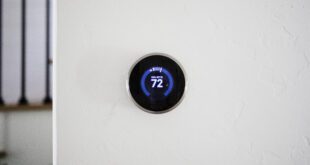Home may be where the heart is, but work is likely where you spend a lot of your time. Stereotypes of the modern workplace, though, can call to mind images more in keeping with a particularly disturbing Twilight Zone episode than with scenes of happy, creative productivity.
When you think of today’s workplace, you might picture row upon row of hunched and defeated-looking workers stuffed into cramped cubicles, or claustrophobic offices with bad lighting and even worse ventilation. But it doesn’t have to be this way. Now, more than ever, employers are recognizing the benefits of biophilic design in the workplace. But what is biophilic design?
We’re All Biophiles!
If you’re reading this, and you’re human, then chances are, you’re a biophile. Surprised? You shouldn’t be! Because all biophilia really means is that you have an instinctive love of or appreciation for the natural world.
It’s in human nature to find comfort and inspiration in, well, nature and that is why employers are increasingly turning to biophilic design to create a more pleasing and productive work environment. There are a variety of ways businesses can incorporate biophilic design in the workplace, ranging from the subtle to the more conspicuous. Biophilic design, after all, can encompass everything from the installation of solar panels and automated lights to increase energy efficiency to the construction of an indoor water feature to promote relaxation and focus.
Protecting the Environment
As might be expected, the love of nature that is at the heart of biophilia means that the protection of nature is also a significant concern of this method of design. Fundamental to biophilic design is sustainability. Thus, a biophilic workplace might encompass everything from a standard recycling center to an on-campus composting site to ensuring that shredded paper is properly disposed of.
If you’re working in a biophilic workplace, you might find yourself cultivating and eating from a community garden you tend with your colleagues or driving a company car powered by electricity. When it comes to creative ways to protect the environment while keeping businesses humming, biophilic design is the reigning champion.
It’s Just Good Business
The unique ability of biophilic designers to combine ethical values with a strong business plan is what makes this strategy so appealing to so many employers. After all, sustainability is not just a moral imperative, it’s also big business. Recent estimates suggest that clean energy alone may generate more than one million jobs and over $150 billion in financing in the United States.
Not only this, but biophilic design can be an excellent branding strategy for your company. After all, corporate social responsibility is rapidly becoming a key determinant of success in the modern business world. If your workplace features biophilic design, then it can automatically telegraph to your clients, staff, and stakeholders the CSR investments your company has made to the wellbeing of both your people and your planet.
Benefits to the Body
Biophilic design is not just about protecting the environment or driving revenue through the institution of sustainable practices. It’s also about promoting employees’ health. Recent studies have found a disturbing link between illness, premature death, and environmental contamination in the workplace. For example, a 2017 CDC report found that American workers remain at significant risk of prolonged asbestos exposure in the workplace. This can significantly increase workers’ vulnerability to aggressive cancers such as mesothelioma, lung cancer, and cancers of the gastrointestinal tract.
Such threats of environmental contamination of the workplace are anathema to biophilic design. At the core of its mission is to identify and remediate the risks imposed by the physical workspace, ensuring that workers are stronger and healthier not only for the present, but for years to come.
Benefits to the Mind
Biophilic design doesn’t just benefit workers’ bodies, promoting physical health and longevity. Perhaps its greatest attribute, in fact, is its effect on workers’ minds and spirits. Biophilic design is predicated on the assumption that being surrounded by natural elements, or even features inspired by nature, will promote a sense of peace, happiness, and well-being.
Workplaces which feature elements made of natural materials, woods, grasses, rocks, water, and other similar materials have been shown to increase both mindfulness and productivity. In addition, designs that mimic the shapes, textures, and sounds of nature in the workplace help to boost employees’ moods, reduce anxiety, increase creativity, and drive job satisfaction.
All this distills down to the creation of a happier and more inspired workplace. And when workers are happy, they tend to perform better stay with an employer longer.
The Takeaway
Incorporating biophilic design in the workplace is far more than some New Age fad. It is a proven, practical strategy for optimizing productivity and cutting energy costs — all the while protecting the environment, supporting the physical and mental health of your staff, clients, and stakeholders, and cultivating a happy and harmonious work environment. Not a bad return on a simple investment of your time and creativity!
 Alternative Energy HQ solar power for homes, wind energy, and bio fuel issues
Alternative Energy HQ solar power for homes, wind energy, and bio fuel issues









One comment
Pingback: A Happy (Work)Place: The Wonders of Biophilic Design